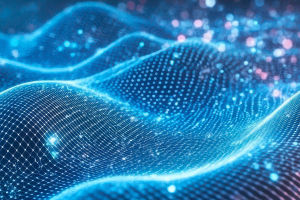Friends, picture stepping into a world where tomorrow’s robots are not cold, rigid machines but living companions—machines that inhale, feel and adapt to their surroundings as naturally as any animal.
Imagine a silent automaton with skin that senses every gentle caress, a soft exoskeleton that flexes like muscle fibers, and a “brain” woven into its very sinews. This isn’t science fiction—it’s the dawning era of Physical AI.
The Dawn of Physical AI
A new scientific frontier is taking shape: robots designed to move, feel and decide as organically as animals. Unlike today’s digital AIs—confined to screens and cloud servers—Physical AI embeds computation within materials, motors and sensors. Think of a robotic salamander that slithers through rubble in search‑and‑rescue missions, its skin composed of self‑healing polymers and microscopic fluidic circuits. This next generation of machines demands a radical rethink: intelligence must emerge not only from code, but from the very fabric of their bodies.
Uniting Form and Function
Historically, “bodies” and “brains” in robotics grew on separate tracks. Computer scientists crafted algorithms for vision and decision‑making, while mechanical engineers built rigid frames. The gap has hampered autonomy: robots struggle to coordinate movement, balance and environmental sensing as seamlessly as biological organisms.
Physical AI champions co‑evolution—designing the mechanical morphology alongside embedded learning systems. Picture neuromorphic chips printed on flexible substrates, working in tandem with soft actuators that mimic muscle fibers. Together, they enable fluid locomotion, active touch sensing and reflex‑style responses.
Essential Disciplines Revealed
Crafting these lifelike machines calls for expertise across five pillars:
- Materials Science: Development of smart polymers that change stiffness on demand, stretchable electronics, self‑repairing composites and biocompatible hydrogels.
- Mechanical Engineering: Design of 3D‑printed skeletons, tendon‑like actuators and fluidic logic gates that direct motion without cumbersome wiring.
- Computer Science: Implementation of on‑board machine learning, neuromorphic computation and real‑time control algorithms for autonomy.
- Biology: Insights from locomotion in insects, muscle architecture and sensory organs inspire adaptive gaits and artificial proprioception.
- Chemistry: Creation of embedded chemical sensors analogous to olfactory systems, energy‑harvesting reactions and stimuli‑responsive gels.
From Lab Bench to Living Machines
Leading the charge, the joint Imperial‑Empa Materials and Technology Centre of Robotics blends Imperial College London’s aerial robotics know‑how with Empa’s materials expertise. In one recent demonstration, a soft robotic gripper built from bio‑inspired elastomers delicately manipulated ripe tomatoes without bruising them.
Elsewhere, teams are “growing” robot components: cultured muscle tissues integrated with printed sensors guide movement, while microfluidic networks pump fluids that mimic blood flow for cooling and energy distribution. These hands‑on experiments underscore that Physical AI demands a lab culture where chemists, biologists, engineers and computer scientists huddle around the same bench.
Blueprint for Multidisciplinary Education
To bridge the current skills gap, an educational overhaul is underway. Rather than siloed courses, students might enrol in “Physical Intelligence” modules combining lectures on polymer chemistry with workshops on embedded machine learning and bio‑robotics.
Assessments could include team projects: designing an autonomously swimming soft robot whose skins detect pH changes. Faculty recruitment must mirror this integration—seeking scholars who straddle disciplines and champion risk‑taking beyond narrow research comfort zones. By embedding Physical AI curricula at undergraduate and graduate levels, institutions seed the next generation with the bold skill sets needed to animate tomorrow’s machines.
Fostering Cross‑Disciplinary Partnerships
Collaboration lies at the heart of Physical AI’s promise. Joint ventures—like the Imperial‑Empa centre—link material innovation with real‑world flight tests or infrastructure inspections. Startups are sprouting at this nexus, developing soft exoskeletons for rehabilitation that blend chemical actuators, real‑time gait analysis and adaptive control algorithms.
Funding agencies are urged to prioritize multidisciplinary grants, while professional societies can host hackathons where chemists mix responsive gels as mechanical engineers code walking gaits. This ecosystem of shared labs, open‑source toolkits and collaborative challenges speeds progress toward machines that learn through touch, chemistry and movement as naturally as living beings.
Conclusion: Shaping Tomorrow’s Innovators
Physical AI stands on the brink of transforming robotics from rigid automatons into living‑machine hybrids. By weaving materials science, mechanics, computing, biology and chemistry into cohesive programs and partnerships, the next wave of researchers will unlock capabilities once reserved for nature.
Which domain will ignite the spark of your curiosity—soft materials that heal themselves, or fluidic chips that think without electronics? Share this vision, explore a new discipline and join the quest to breathe true intelligence into machines.


